Picture Books 101 (Part 9): Art Notes
Should writers include art notes with their picture book manuscripts?
Hi, I’m Debbie Ridpath Ohi! Welcome to Part 8 of my Picture Books 101 post series about writing and illustrating picture books.
In this instalment of Picture Books 101, I’m going to address the often thorny topic of ART NOTES, in the context of picture book manuscripts. When a writer includes an art note in their mss, it means they’re adding written directions for the illustrator.
Sometimes art notes are necessary, sometimes not.
Please note that this article is geared toward those interested in traditional publishing houses (as opposed to self-publishing). Also note that there are always exceptions. Advice below is based on my own experience working with Simon & Schuster, Random House Children’s, and HarperCollins Children’s.
Misconception: A picture book illustrator just draws whatever is in the story text.
This is what leads many new picture book writers to assume that they are The Boss when it comes to creating a picture book.
They don’t understand that picture books are much more of a true creative collaboration:
The above isn’t really an accurate depiction of the working relationship, though. In all my experiences working with Simon & Schuster, Random House, and HarperCollins, I usually do NOT interact directly with the author during my creative process. Quite often, I’ll have a phone call, email, or online meeting with the art director and editor near the beginning of a project, to make sure we are all on the same page, and then work almost exclusively with the art director.
One of my early mentors, Cecilia Yung (used to be art director at Penguin, now retired), said that one role of the art director is to help be a buffer between the illustrator and the author.
I was confused by this when I first starting illustrating picture books, but now I appreciate this process.
For one thing, it helps prevent authors trying to micro-manage the illustrator:
Also, minimizing art notes frees up the illustrator to bring their own creative vision to the project, adding depth and context that the text alone is not able to convey. This collaboration between author and illustrator transforms a picture book from a simple narrative into a multi-layered experience for a young reader. The text and illustration enhance each other.
I love being given this kind of freedom to bring my own creative vision to a picture book collaboration.
Early in my career, however, I remember being shocked when I received the manuscript for my very first picture book illustration project:
Notice that there is NO physical description of the child nor the setting. Note that the original mss didn’t even specify the gender of the child (!!).
At first I was hugely intimidated. I had done a little bit of freelance art, and was used to getting detailed instructions on what clients wanted me to draw.
Here’s what I ended up doing with the first two spreads:
After I got over my initial surprise at having so much leeway, I grew more confident, appreciating the opportunity to stretch my illustrator wings. Since then, I’ve come to value this kind of creative freedom more and more.
With rare exception, if a manuscript comes to me nowadays that is full of detailed art notes, I find my enthusiasm for the project ebbing away, and I’m more likely to decline it because I know I won’t enjoy the process as much.
When are art notes necessary?
There ARE exceptions, however, where art notes are appreciated or necessary. These include:
When the author is beloved and well-known, and therefore (justifiably) has more say in how the art should look. Judy Blume, for instance! Judy had final say in the choice of the illustrator for her books; see my Substack post about my experience as a Judy Blume illustrator.
When there are details that need to be accurate, such as a nonfiction book or when the art needs to accurately reflect a particular culture.
When the art note is necessary to understanding the text.
When the art note is necessary because what is happening in the illustration contradicts what is being said in the text. (Example: visual irony in I Want My Hat Back by Jon Klassen)
If there are wordless spreads that need explanation.
Here’s an example, using a spread from Sam & Eva:
Let’s pretend that I only wrote the text, and was submitting the manuscript. For the text above, I would need to include art notes indicating essential plot-related visual cues that need to be shown in the art, plus the fact that some of the text on the second page of the spread needs to be crossed out, with handwritten words substituted.
What kind of art notes tend NOT to be necessary?
Physical descriptions, unless absolutely essential.
Avoid including art notes that describe what the characters look like, what they’re wearing, what else is in the room or setting etc if these are not important for understanding your story.
At this point, some of you authors might be thinking, “But it’s MY STORY, and I already have a mental image of what everything should look like!”
Keep in mind that a picture book is a creative collaboration. You need to trust in the experience of the illustrator, art director, and editor, as well as their contribution to the overall project. So much, I find, is about TRUST.
Having said that, of course, you should speak up if you feel strongly enough - it’s in the publisher’s interest for you to be happy with the final book; you’re more likely to help promote it, and want to work with them again. I also advise having a good reason for wanting the art changed; saying “I don’t like how the artist drew the kimono on my main character” is not nearly as convincing a reason as “where my main character lives, the kimono is typically folded differently for boys and girls, here are some links to sources/photos to show you what I mean”.
What should an art note look like?
There is no ONE official format, but I suggest putting your art note in italics. Some picture book authors use a slightly different color (medium gray instead of black, for instance).
Some authors use square or rounded brackets to set their art notes apart.
Example:
[Art note: ….etc.]
Because some editors strongly dislike art notes, you may also want to include any art notes as a suggestion rather than a command. That way the editor knows you are flexible and trust the editor, art director, and illustrator in the creative process.
[Art suggestion: ….etc.]
If you envision a particular setting or certain visual elements that are important overall for the story, I suggest putting them in ONE art note at the beginning.
There is no hard rule about including (or not including) art notes.
As I mentioned earlier, there is no hard-and-fast rule.
As an illustrator, I dislike non-essential art notes, at least when I do a first reading of picture book mss. However, I do appreciate that some art notes are necessary.
I know of editors who don’t mind art notes but also some who hate them. One editor says that art notes distract her from the actual story while she’s reading it through for the first time. Another editor said that by including non-essential art notes, an author is assuming that the editor lacks the imagination to fill in the visual elements.
My agent at Curtis Brown Ltd Once told me she sometimes prepares two different versions of a picture book mss - one with art notes and one without. That way, and editor has the option of reading JUST the text once through, without being distracted by lots of art notes.
POLL for picture book authors and illustrators: What do YOU think?
How do you feel about art notes? Love them? Hate them? How do you handle them in your work? Please post in the comments.
Related resources:
Q&A: A Quick Note On Art Notes - by Lindsay Ward.
Picture Book Art Notes Decoded - by Carrie Pearson.
Including Art Notes In Picture Book Manuscripts - by Alayne Kay Christian, includes example of a mss with art notes.
Illustration Notes: To Include Or Not To Include - by Johnell Dewitt
Art Notes in Picture Book Manuscripts: The Grid Format Solution - by Tara Lazar.
Picture Book Manuscripts and Illustrations - by Harold Underdown
Including Illustration Notes In Your Children’s Book Manuscript - by Mary Kole, KidLit.com


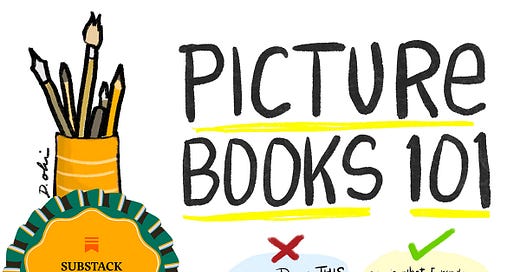



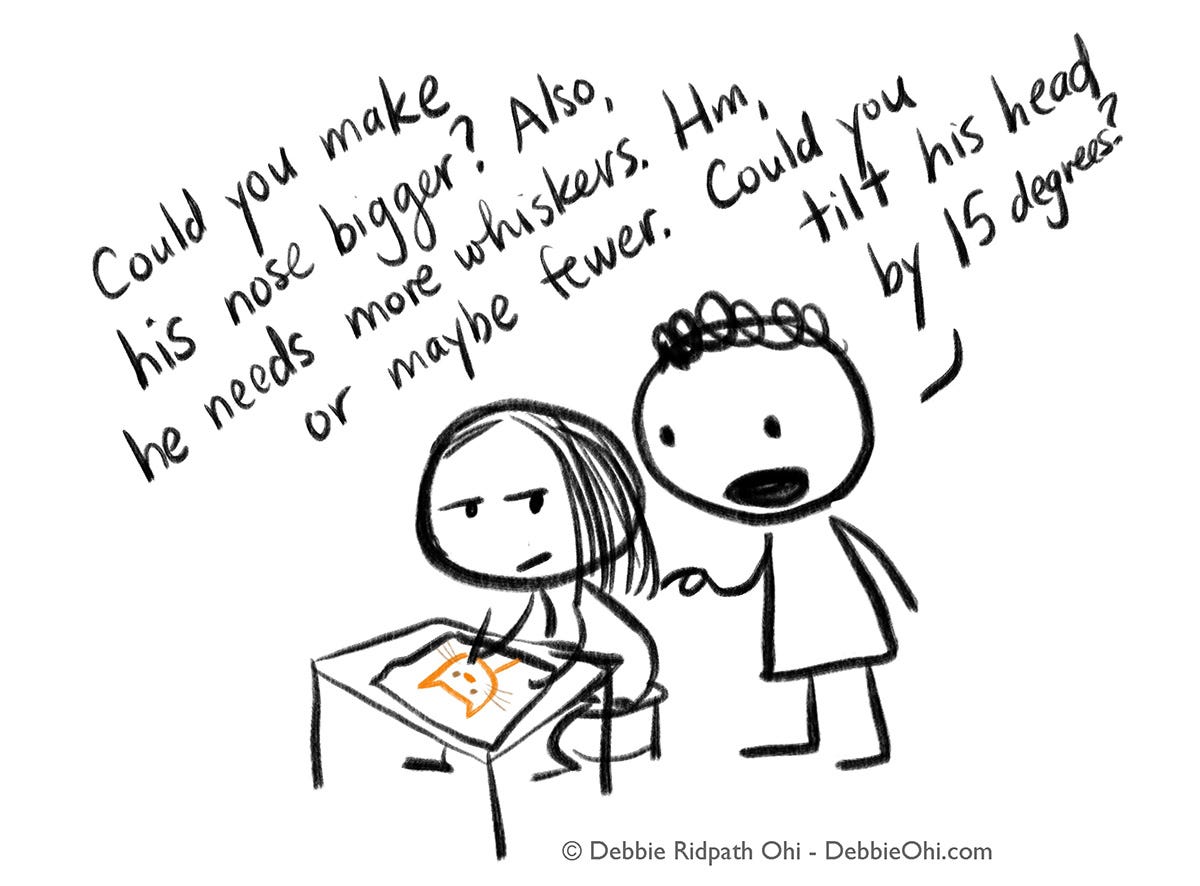


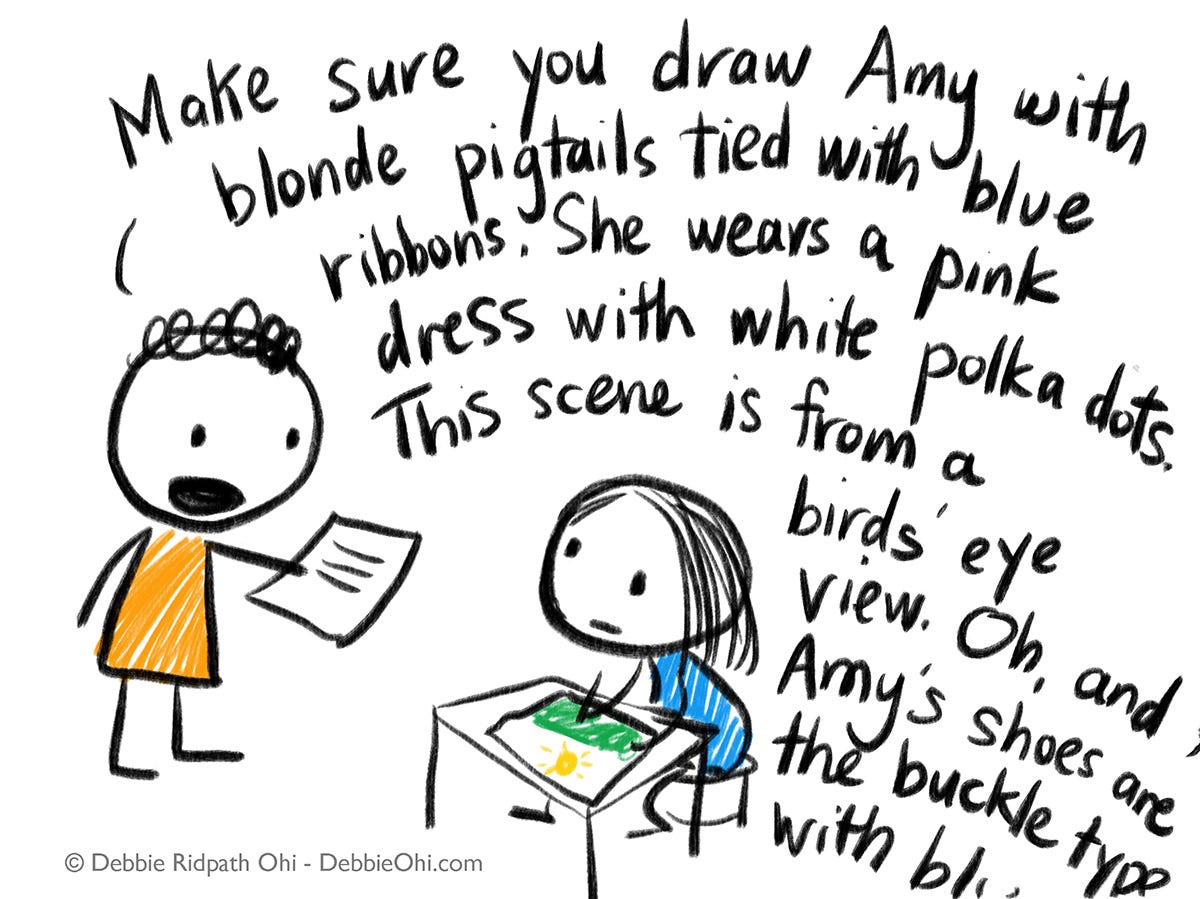
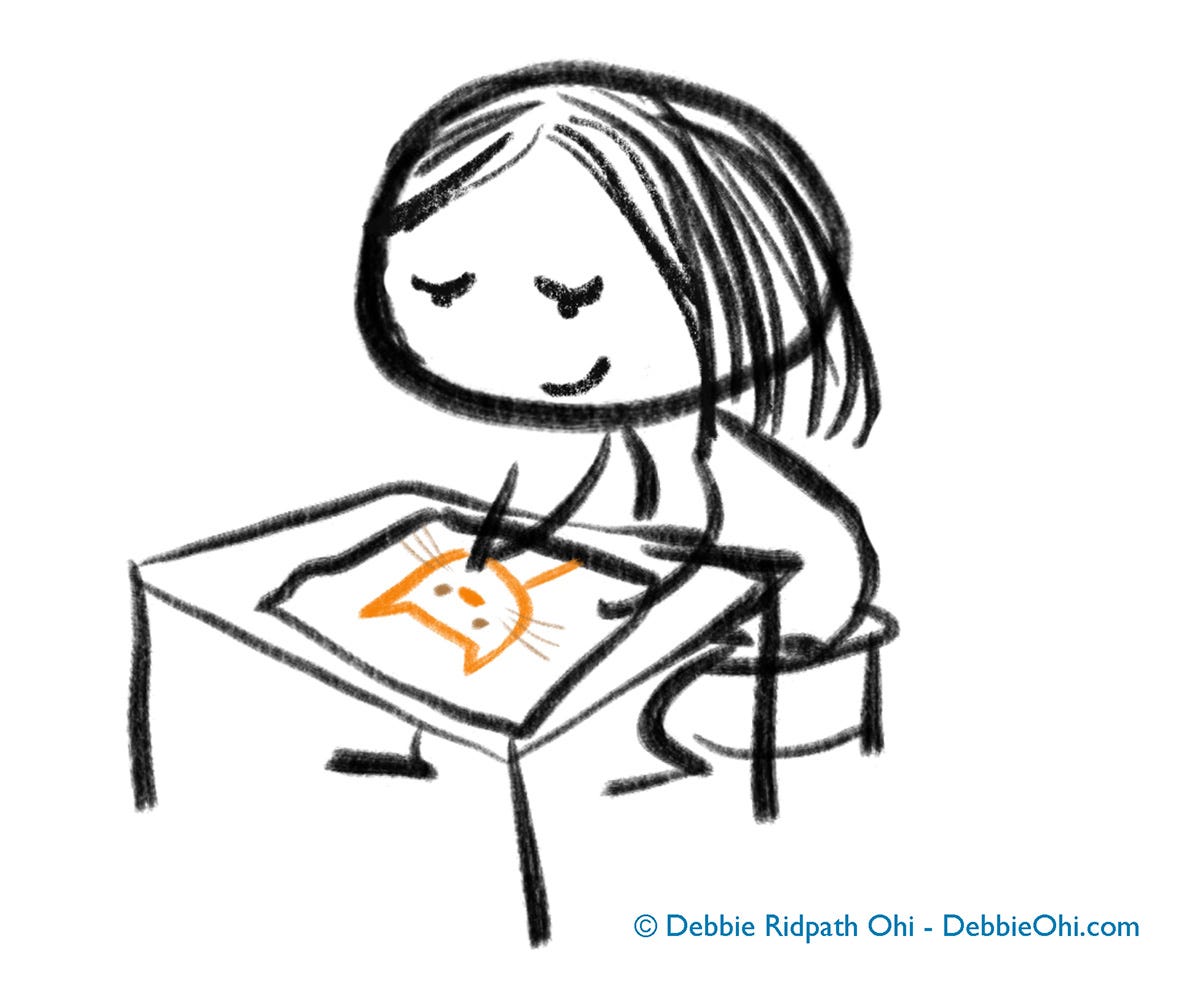


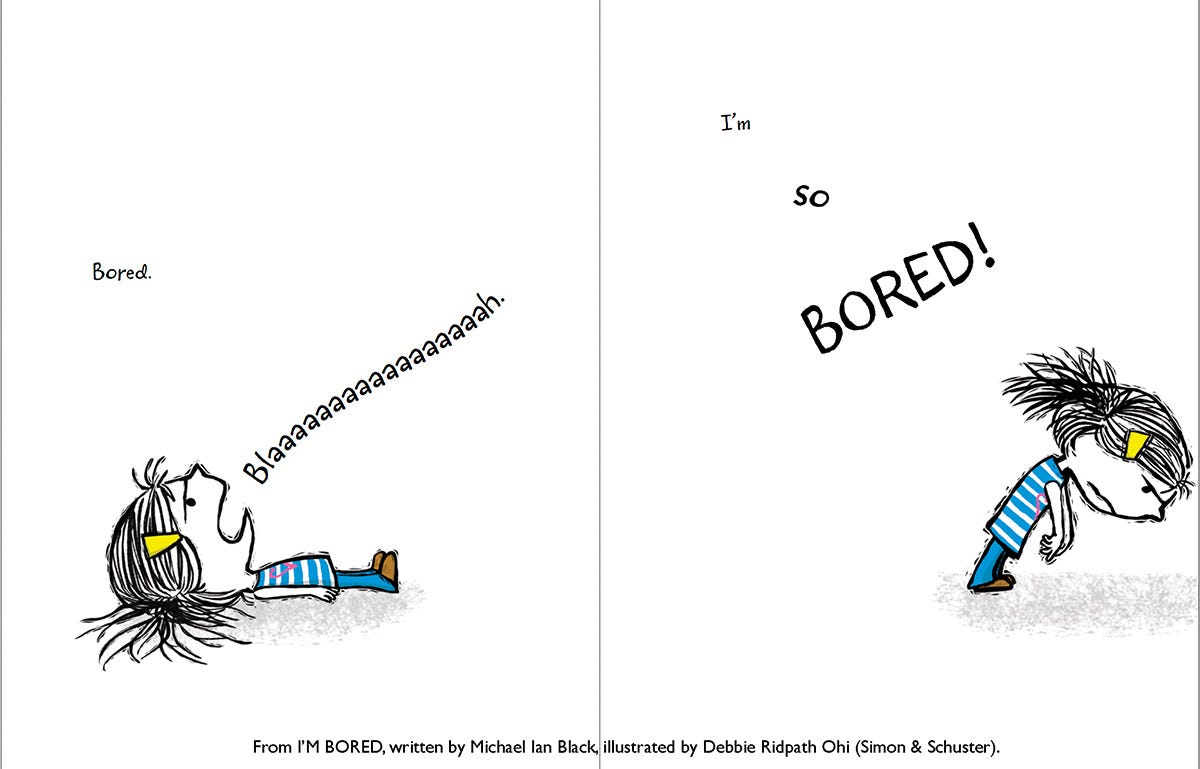
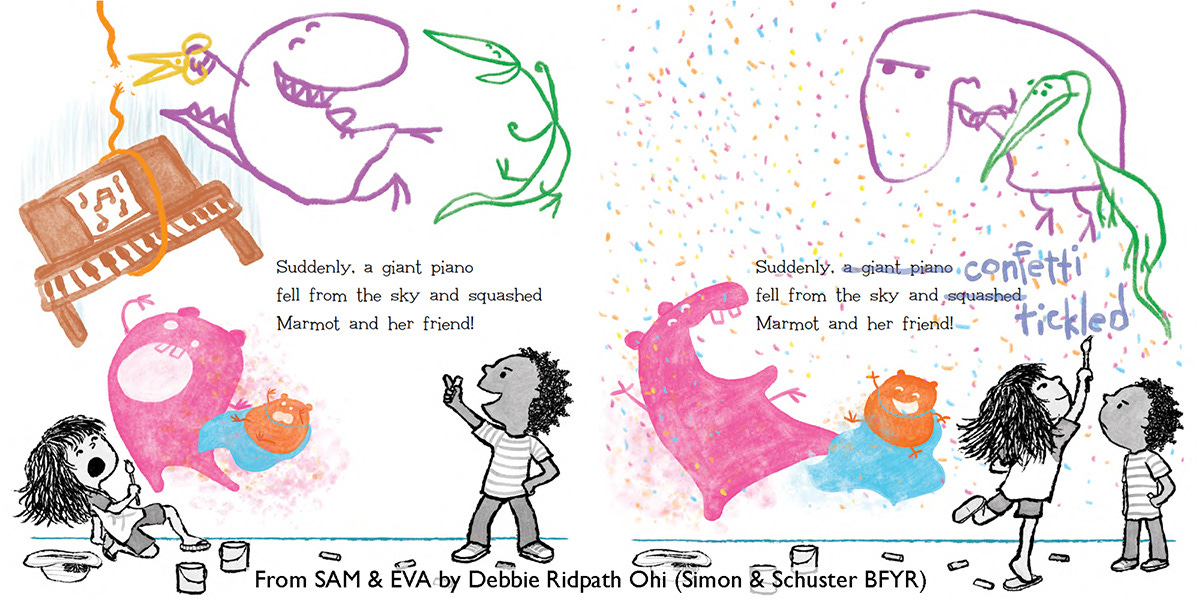
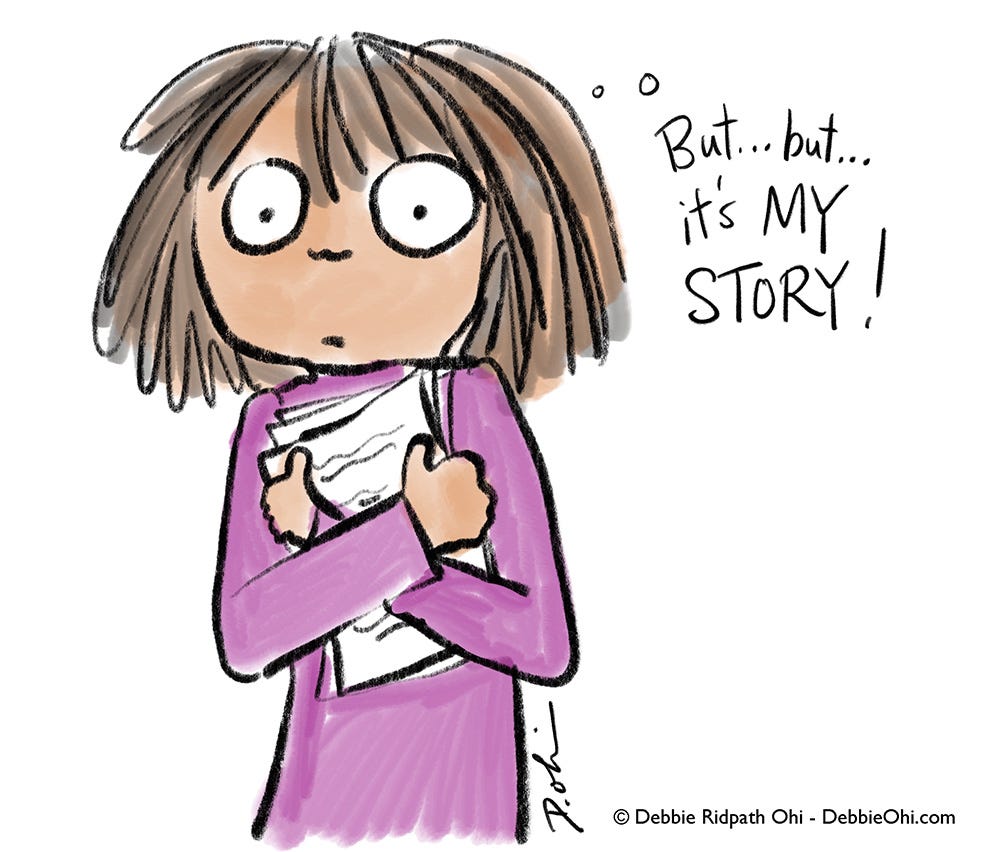
I once heard an illustrator say they return the manuscript and ask for a clean one if it has too many notes! I thought that was brilliant. Fortunately I haven't had one like that myself. Most of my authors have been pretty experienced. Either that or the AD is secretly stripping them out! 😂
This is such a good description of the process! I always have a hard time explaining this to writers that when they write detailed notes it doesn't really help me. It more just takes away my creativity, and you so right about reducing enthusiasm too!